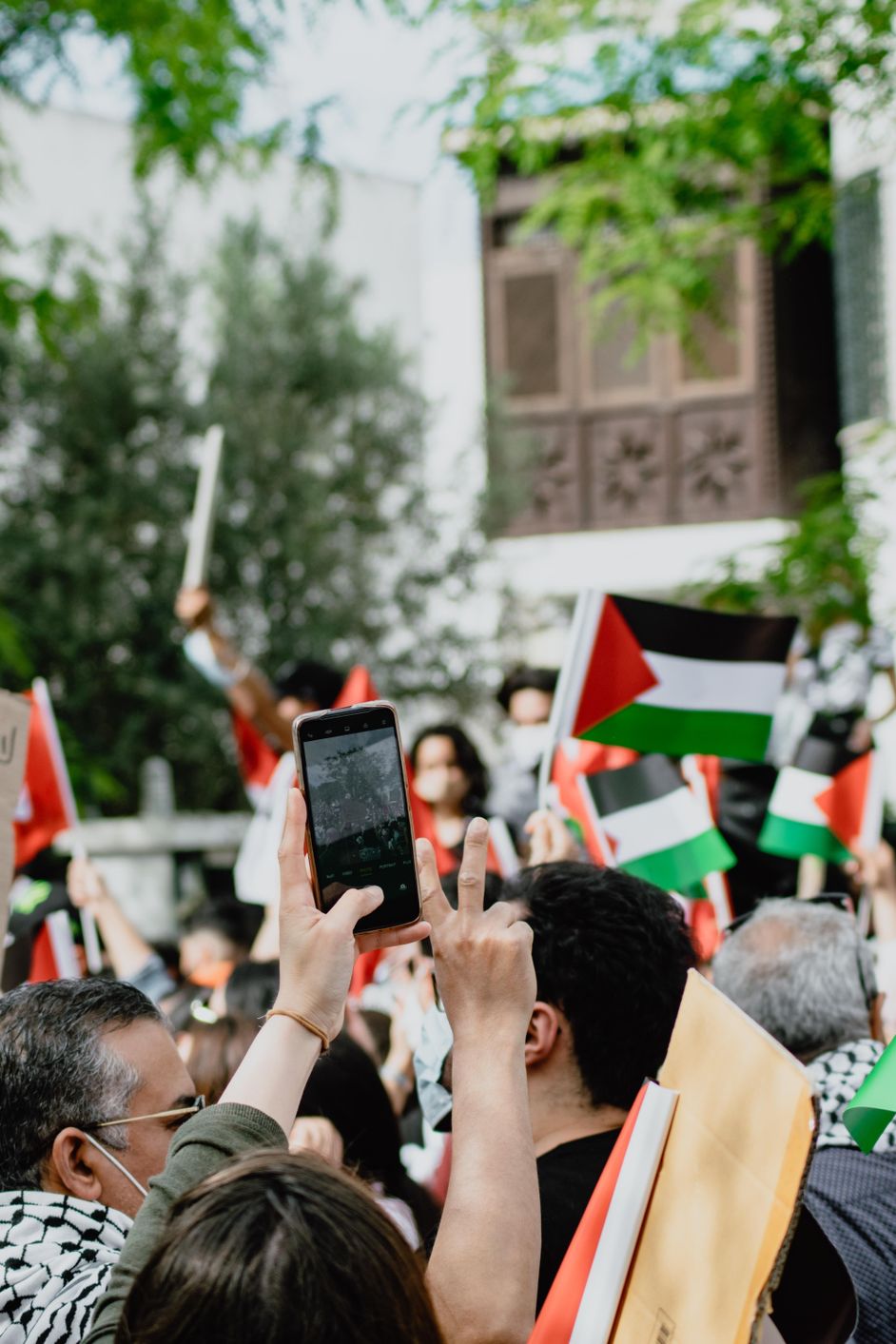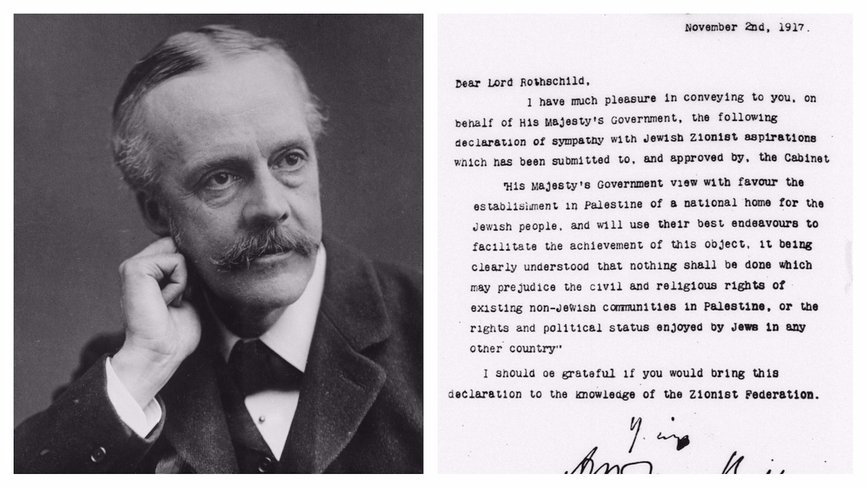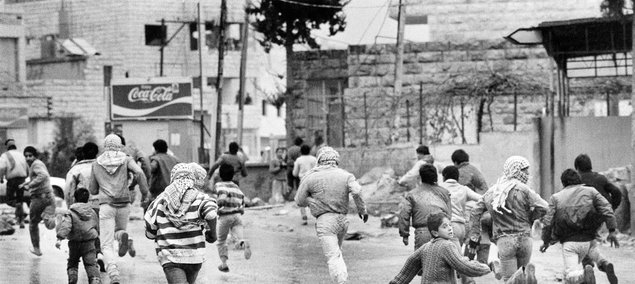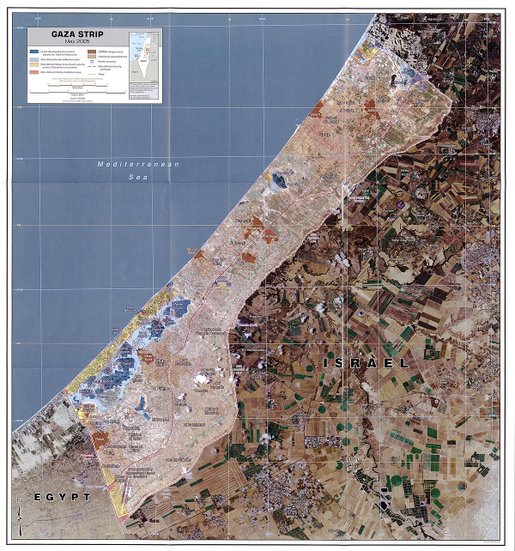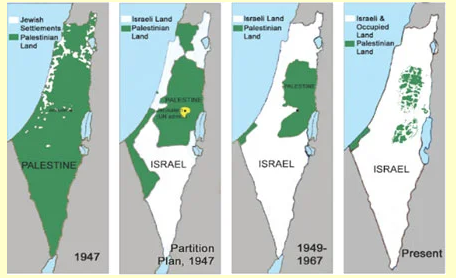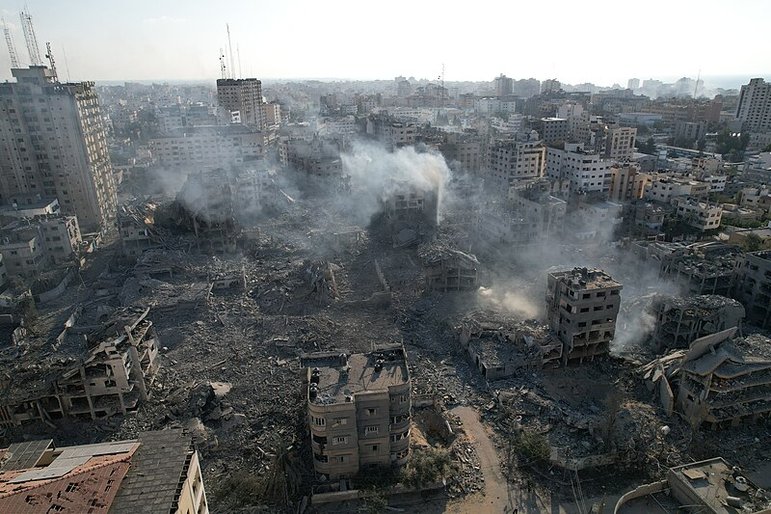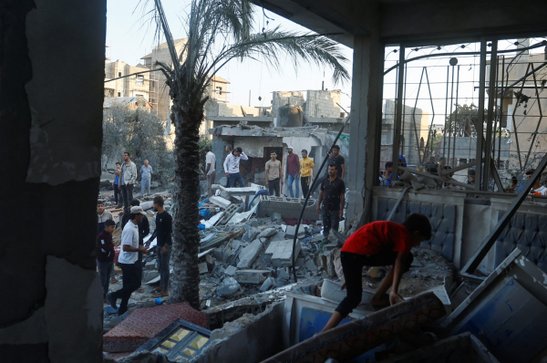22.09.2021
A History of Conflict: Isreal and Palestine
Introduction
The conflict between Israel and Palestine is a deeply entrenched and complex issue that has persisted for decades. This article will provide an overview of the historical background and key events that have shaped the ongoing conflict between these two entities. It's important to note that the situation is highly sensitive and continually evolving, so this article's knowledge is limited to information available up until September 2021.
Ancient Roots of the Conflict
The roots of the Israel-Palestine conflict trace back thousands of years, with both Jewish and Arab ties to the region. Historically, the land now known as Israel, the West Bank, and Gaza has been inhabited by various groups, including Canaanites, Israelites, Philistines, and many others. Throughout the ages, the region was conquered and controlled by various empires, including the Assyrians, Babylonians, Persians, Romans, and Byzantines.
In the 7th century CE, Arab Muslims conquered the area, establishing Islamic rule. This marked the beginning of Arab-Muslim presence in the region, which would continue for centuries.
Zionism and the Balfour Declaration
In the late 19th century, the Zionist movement emerged in Europe, advocating for the establishment of a Jewish homeland in Palestine. The movement was driven by the desire to create a safe haven for Jews, especially in the face of rising anti-Semitism in Europe.
The Balfour Declaration of 1917, issued by the British government, expressed support for "the establishment in Palestine of a national home for the Jewish people." This declaration laid the groundwork for Jewish immigration to Palestine.
British Mandate and Arab Resistance
Following World War I, the League of Nations granted Britain a mandate to govern Palestine. During the British Mandate period (1920-1948), Jewish immigration to the region increased significantly, leading to tensions between Jewish immigrants and Arab residents.
Arab opposition to the growing Jewish presence culminated in the 1936-1939 Arab revolt, a violent uprising against British rule and Jewish immigration. The British attempted to limit Jewish immigration, which further escalated tensions.
The Holocaust and Jewish Immigration
The Holocaust during World War II had a profound impact on the Zionist movement and Jewish immigration to Palestine. The horrors of the Holocaust underscored the need for a Jewish homeland, and survivors sought refuge in Palestine. This intensified the conflict between Jews and Arabs in the region.
UN Partition Plan and the 1948 War
In 1947, the United Nations proposed a plan to partition Palestine into separate Jewish and Arab states, with Jerusalem as an international city. The plan was accepted by the Jewish leadership but rejected by the Arab states and Palestinian leadership. The disagreement led to the 1948 Arab-Israeli War, known as the War of Independence in Israel and the Nakba (catastrophe) in Palestine.
The outcome of the war resulted in Israel's declaration of independence and the displacement of hundreds of thousands of Palestinian Arabs. The conflict's aftermath created a large population of Palestinian refugees, a central issue in the ongoing conflict.
The Six-Day War
In 1967, another pivotal event occurred: the Six-Day War. Israel, fearing an attack from neighboring Arab states, launched a preemptive strike against Egypt, Jordan, and Syria. Israel's victory in the war resulted in the occupation of the West Bank, Gaza Strip, Sinai Peninsula, and Golan Heights.
The occupation of Palestinian territories further deepened the conflict, as Israel's presence in these areas led to tensions, protests, and resistance.
The First Intifada
In 1987, the First Intifada (Palestinian uprising) began, a sustained period of protest and civil disobedience against Israeli rule in the occupied territories. The First Intifada marked a turning point in the conflict, as it brought international attention to the Palestinian cause and pressure on Israel to address the issue.
Oslo Accords and the Peace Process
In the early 1990s, a series of secret negotiations in Oslo, Norway, led to the signing of the Oslo Accords in 1993. These agreements established a framework for Palestinian self-rule and a path toward a two-state solution. However, the peace process faced numerous obstacles, including issues related to borders, refugees, and the status of Jerusalem.
The Second Intifada
The peace process suffered a severe setback with the outbreak of the Second Intifada in 2000, marked by a wave of violence and suicide bombings. The violence resulted in a hardening of positions on both sides and the construction of the West Bank barrier by Israel.
Gaza Strip Disengagement
In 2005, Israel unilaterally disengaged from the Gaza Strip, dismantling settlements and withdrawing its troops. This move was seen as an attempt to reduce tensions, but it also left Gaza under the control of Hamas, a Palestinian militant group. The situation in Gaza has since deteriorated, leading to multiple conflicts.
Gaza Wars and Ongoing Tensions
Several wars have erupted between Israel and Hamas, the most significant being in 2008-2009, 2012, and 2014. These conflicts resulted in significant civilian casualties and damage, drawing international condemnation. Israel maintains a blockade on Gaza, which has severely limited the movement of people and goods.
How has Israel altered its occupation of Palestinian land over the years?
- When the war was over, Israel had captured more territories than what the UN plan had proposed and some 7,00,000 Palestinians were displaced.
- Israel still occupies the West Bank, and although it pulled out of Gaza the UN still regards that piece of land as occupied territory.
- Israel claims the whole of Jerusalem as its capital, while the Palestinians claim East Jerusalem as the capital of a future Palestinian state.
Current State of Affairs: Tofan Al Aqsa (Al Aqsa Floods)
The military campaign known as "Tufan al-Aqsa," alternatively referred to as "Operation Iron Swords" within Israel and by some sources dubbed the "Third Intifada," stands as an extensive operation conducted by Palestinian resistance factions based in the Gaza Strip. This operation is spearheaded by the Hamas movement, operating through its military wing, the Al-Qassam Brigades. It was launched in the early hours of Saturday, October 7, 2023, following an announcement by the General Commander of the Al-Qassam Brigades, Mohammed Al-Dayf, who cited Israeli infringements within the vicinity of the revered Al-Aqsa Mosque and assaults by Israeli settlers on Palestinian citizens in Jerusalem, the West Bank, and the occupied territories as the impetus for the operation.
The commencement of "Tufan al-Aqsa" was marked by an extensive missile attack unleashed by the resistance factions. Thousands of rockets were directed towards various Israeli settlements, ranging from Dimona in the south to Hod Hasharon in the north, and even extending to Jerusalem in the east.
Concurrently, resistance fighters launched a ground incursion using various means, including four-wheel-drive vehicles, motorcycles, ultralight aircraft, and others. Their target was the towns neighboring the Gaza Strip, collectively known as the "Gaza Envelope." In these incursions, they wrested control of numerous military positions, with particular focus on Sderot, advancing as far as Ofakim, and infiltrating Netivot. Fierce clashes erupted in these three settlements and others, resulting in the capture of several soldiers who were subsequently taken to Gaza. Additionally, a variety of Israeli military vehicles were confiscated during these operations.
Israel's recent significant attack on the Gaza Strip, carried out on May 9, 2023, under the name "Operation Arrow and Shield," resulted in the loss of 31 lives, including 24 civilians. The Israeli authorities sought to garner sympathy with this attack, accompanied by a media campaign aiming to brand the resistance factions as "terrorists." This situation escalated to the extent that the Israeli representative to the United Nations Security Council called for international solidarity and support.
In response to this call, Israel received prompt assistance from its allies, especially after U.S. Secretary of Defense Lloyd Austin announced that the Pentagon would supply Tel Aviv with the necessary resources for self-defense. Subsequently, the Israeli Ministerial Committee officially declared Israel to be in a state of war. This was followed by a statement from the Israeli army commander, the first such announcement since the outset of the Palestinian operation, declaring, "It is the time of war."
Israel immediately enjoyed direct support and backing from most Western countries, as well as the United States. U.S. Secretary of State Antony Blinken characterized "Operation Arrow and Shield of Al-Aqsa" as the "worst attack on Israel since 1973," categorizing it as an "act of terrorism."
The morgue at Gaza’s largest hospital is overflowing as Israeli attacks intensify
In the wake of an unprecedented Hamas attack, which resulted in a significant Israeli onslaught, scores of Palestinians are losing their lives daily. Medics in the besieged enclave are struggling to cope, as there is no longer space to accommodate the bodies from the latest strikes or those recovered from the wreckage of destroyed buildings.
The morgue at Gaza City's Shifa hospital, designed to handle about 30 bodies at a time, has been stretched to its limits. Workers have been forced to stack bodies three high outside the walk-in cooler, and dozens more are placed side by side in the hospital's parking lot. Some have been set up in a makeshift tent, while others lie exposed on the cement under the scorching sun.
Abu Elias Shobaki, a nurse at Shifa, described the situation in the parking lot as "a graveyard" and shared his emotional and physical exhaustion. He emphasized the need to avoid contemplating how much worse things may become.
Nearly a week after Hamas militants breached Israel's heavily fortified separation fence, resulting in the deaths of over 1,200 Israelis in a brutal rampage, Israel is now preparing for a potential ground invasion of Gaza, a move not seen in nearly a decade. Such an offensive would likely drive up the Palestinian death toll, which has already surpassed the casualties of the previous four bloody conflicts between Israel and Hamas.
The volume of human remains has pushed Gaza's already strained system to its breaking point. In a territory that has been under blockade for an extended period, Gaza's hospitals were already poorly supplied, and Israel's actions, including the blockage of water, electricity, food, and fuel, have made the situation even more dire.
Ashraf al-Qidra, the spokesman for the Gaza Health Ministry, expressed the critical condition they find themselves in. Ambulances can't reach the wounded, the wounded can't access intensive care, and the dead cannot be moved to the morgue.
White body bags, with exposed soles of bare feet and bloodied limbs, serve as a stark visual representation of the intensity of Israel's retaliation against Gaza. Hospital officials have been tasked with the difficult duty of asking distraught family members to identify their loved ones, with some individuals peering into the body bags, only to be overcome with grief.
Israel's campaign in Gaza has led to the destruction of entire neighborhoods, causing the death of over 1,400 people, with more than 60 percent of them being women and children, as reported by the Gaza Health Ministry. Additionally, over 340,000 people have been displaced, amounting to 15 percent of Gaza's population.
Recent Israeli airstrikes have specifically targeted the heart of the Jabaliya refugee camp, resulting in the deaths of dozens, including 45 members of an extended family, according to Gaza's Interior Ministry.
While the Israeli military asserts that it is targeting Hamas militant infrastructure and aiming to avoid civilian casualties, Palestinians dispute these claims.
The high number of casualties, with over 6,000 injuries, has overwhelmed Gaza's healthcare facilities, which are grappling with diminishing supplies.
"It is not possible, under any circumstances, to continue this work," stated Mohammad Abu Selim, Shifa's general director. Patients are now being treated outdoors, and the wounded have no available beds.
With resources stretched thin, clinics facing staff shortages, and ambulances taking hours to reach victims due to the destruction in the streets, some individuals have resigned themselves to the grim reality.
Khalil Abu Yehiya, a 28-year-old teacher, acknowledged the futility of seeking medical care under such dire circumstances. "We know that if a case is critical, they just won't survive," he said, as he recounted the bombing of his neighbor's home during the airstrikes on the Jabaliya refugee camp.
When heavy bombardment struck the Shati refugee camp north of Gaza City along the Mediterranean coast, a fresh wave of wounded individuals inundated the hospital complex. Hospital corridors were filled with patients, as the intensive care unit at Shifa had already reached its capacity, leaving patients to lie in the hallways.
Local photojournalist Attia Darwish, who witnessed the influx of wounded, described the situation as "a level of insanity" that exceeded anything he had previously encountered.
Among those killed in the strikes on the Shati refugee camp was Yasser al-Masri, whose body arrived at the hospital alongside the remains of his wife and infant daughter. Photos circulated by medics showed al-Masri and his daughter, both covered in filth in the same body bag.
His final Facebook post, composed just before Israel's warplanes struck, revealed the dire circumstances: "I only have a few hours before my phone dies because we're without electricity. There is no light at night except the moon. Please forgive me. I forgive all of you."
Gaza's sole power plant had run out of fuel, leading hospitals like Shifa to conserve the remaining diesel for essential operations while shutting off lights in non-essential hospital departments.
Abu Selima, director of Shifa, warned that the last of the hospital's fuel would run out in a matter of days. The dire consequence would be the inability to power the equipment keeping infants alive, as well as the loss of refrigeration for the deceased.
The effects of the blockade imposed by Israel on the Gaza Strip have started to manifest due to the periodic shutdown of the power station for several hours a day as a result of fuel depletion. This situation forebodes a humanitarian catastrophe and has prompted the government's media office to issue an urgent appeal to the international community to stop this crime against humanity and mass murder through this blockade, complete closure, and the prevention of the most basic necessities of life from entering.
In addition to the suffocating blockade, Israel has committed several massacres against Palestinian families. The Palestinian Ministry of Health has acknowledged that approximately 60% of the injuries resulting from the bombardment on the Strip are children and women. In the same context, the United Nations has released an official statement confirming the deaths of 11 UNRWA employees since the beginning of the conflict on October 7.
Source: Wikepedia
Source: Middle East Monitor
Source: Wikepedia
Source: Israiel/Palestine map over the years
Damage in Gaza strip after Israeil air force strikes during October 2023- Source: Wikepedia
Source: PBS News Hour

